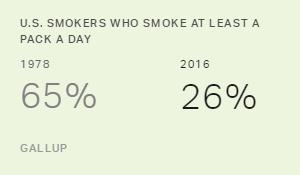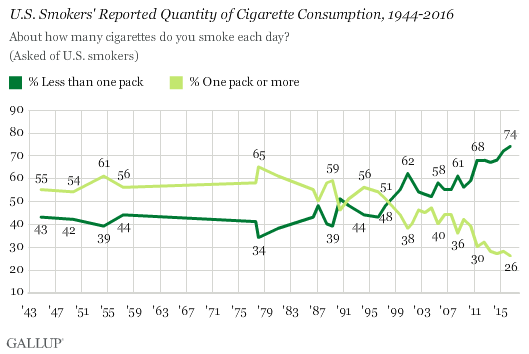Wednesday, August 10th, 2016
George Dvorsky, - Journal of Archaeological Science/Gizmodo
Stephan: Yet another chapter of our past emerges from the mists of time. Who knew the first cultivated creatures were snails, or how varied and nutritional our ancestors' diets were.

A stone blade containing traces of rhino residue.
Credit: April Nowell
Archaeologists have discovered a treasure trove of ancient stone tools at a dig near Azraq, Jordan, some of which still contain traces of animal residue. A number of food items on this bona fide paleolithic menu will be familiar to the modern eater, while others, well, not so much.
A new study published in the Journal of Archaeological Science shows that humans who lived during the Middle Pleistocene (781,000 to 126,000 years ago) were highly adaptable and capable of exploiting a wide range of prey, including wild cattle, horses, duck, and even rhinoceros.
Researchers have known for decades that humans and other early two-legged hominins had been making tools to kill and butcher animals for as long as 2.5 million years ago. But now, for the first time ever, a research team led by April Nowell from the University of Victoria has discovered direct evidence pointing to the exact species of animals […]
No Comments
Tuesday, August 9th, 2016
Joe Romm, Founding editor Climate Progress - Climate Progress
Stephan: The nuclear power industry is a artifact remnant of the Cold War, created so that the U.S. could maintain a cadre of nuclear qualified engineers and other professionals by giving them a civilian career pathway. Great care was taken to make sure that the real cost of nuclear was never allowed to be widely understood, and nuclear power, the come on, was carefully separated from the never solved issue of nuclear waste.
By never solved I mean that from WWII when it began to the present day no successful solution to nuclear waste has ever been devised. And when you calculate the nuclear waste costs into the real price of civilian nuclear energy it becomes so preposterously expensive that no rational person would support it. And even to make the fake numbers work requires hundreds of billions in government subsidies.
The truth is nuclear power was always a smoke and mirrors operation whose real function was not power but maintaining a nuclear arms industry.

Credit: Shutterstock
Half of existing nuclear power plants are no longer profitable. The New York Times and others have tried to blame renewable energy for this, but the admittedly astounding price drops of renewables aren’t the primary cause of the industry’s woes — cheap fracked gas is.
The point of blaming renewables, which currently receive significant government subsidies, is apparently to argue that existing nukes deserve some sort of additional subsidy to keep running — beyond the staggering $100+ billion in subsidies the nuclear industry has received over the decades. But a major reason solar and wind energy receive federal subsidies — which are being phased out over the next few years — is because they are emerging technologies whose prices are still rapidly coming down the learning curve, whereas nuclear is an incumbent technology with a negative learning curve.
The renewable red herring aside, existing nukes can make a reasonable […]
No Comments
Tuesday, August 9th, 2016
Justin McCarthy, - The Gallup Organization
Stephan: Here is some good news about tobacco smoking in the U.S. All of this has occurred, it should be noted not because smoking was outlawed but because millions of people made a small personal choice. It shows the effect on a formerly formidable industry when people exercise a quotidian choice, and choose not to do or buy something. It is a powerful lesson.
 WASHINGTON, D.C. — The percentage of smokers in the U.S. who light up a pack or more of cigarettes a day has fallen sharply over the past decade and is now at an all-time low of 26% in Gallup’s seven-decade trend. The figure topped 30% as recently as 2012 and routinely exceeded 50% until the late 1990s.
WASHINGTON, D.C. — The percentage of smokers in the U.S. who light up a pack or more of cigarettes a day has fallen sharply over the past decade and is now at an all-time low of 26% in Gallup’s seven-decade trend. The figure topped 30% as recently as 2012 and routinely exceeded 50% until the late 1990s.

The latest findings are from Gallup’s annual Consumption Habits poll, conducted July 13-17. The trend shows a continuous decline in the percentage of heavy smokers over the years — with a particularly sharp drop since the late 1990s, when public smoking bans were implemented in many states and municipalities.
The decline in the percentage of heavy smokers somewhat mirrors a long-term decline in the overall percentage of Americans who smoke. Gallup’s data show that 19% of Americans report having smoked cigarettes in the past week, similar to recent years and well below the levels of 40% or higher in the 1940s to early 1970s.
Most Cigarette Smokers Have Tried to Quit
The percentage of current smokers would be even lower if […]
No Comments
Tuesday, August 9th, 2016
joshua m. pearce, Associate Professor - Michigan Technological University - Harvard Business Review
Stephan: Here instead of the usual political drivel about what to do concerning the dying coal industry is some actual information, and I see it as very good news.
 The global economy is in a massive transition from a fossil-fuel-based energy system to one using sophisticated renewable energy technologies. For tens of thousands of fossil fuel workers, though, the energy industry outlook is not promising. For coal industry workers, the future looks particularly bleak. However, research I conducted with Edward Louie of Oregon State University offers hope for a better future based on retraining workers. Our study (published in the journal Energy Economics) quantified the costs and benefits of retraining coal workers for employment in the rapidly expanding solar photovoltaic industry—and it explores different ways to pay for this retraining.
The global economy is in a massive transition from a fossil-fuel-based energy system to one using sophisticated renewable energy technologies. For tens of thousands of fossil fuel workers, though, the energy industry outlook is not promising. For coal industry workers, the future looks particularly bleak. However, research I conducted with Edward Louie of Oregon State University offers hope for a better future based on retraining workers. Our study (published in the journal Energy Economics) quantified the costs and benefits of retraining coal workers for employment in the rapidly expanding solar photovoltaic industry—and it explores different ways to pay for this retraining.
First, some background on the coal industry: Profitability for U.S. coal-fired power plants has been declining and coal use has dropped radically since 2007—a trend that is expected to continue. This reduced profitably has driven a steep cut in coal plants. The U.S. Energy Information Administration notes that between 2010 and 2012, 14 gigawatts (GW) of coal-fired capacity was retired and that a total of 60 GW will be retired by 2020. What these dry government numbers leave out is the […]
No Comments
Tuesday, August 9th, 2016
Michael Greshko, - National Geographic
Stephan: Is a great flood myth turned into history, or history turned into myth? Here's the latest.

Victims felled by an earthquake that occurred around 1920 B.C., which may have triggered a landslide that dammed China’s Yellow River. The subsequent failure of the dam released a massive flood that may be reflected in later Chinese chronicles.
Nearly 4,000 years ago, a landslide sent boulders and sediment tumbling into a valley of the Yellow River. The carnage created a massive earthen dam some 660 feet (200 meters) tall, cutting off the river for months.
When that dam finally burst and the river broke free, a massive flood raged across the countryside—and potentially altered the course of Chinese history.
That’s the story told by sediments and archaeological remains described Thursday in a provocative new study published in Science. If correct, the geologic evidence provides a kernel […]
1 Comment
 WASHINGTON, D.C. — The percentage of smokers in the U.S. who light up a pack or more of cigarettes a day has fallen sharply over the past decade and is now at an all-time low of 26% in Gallup’s seven-decade trend. The figure topped 30% as recently as 2012 and routinely exceeded 50% until the late 1990s.
WASHINGTON, D.C. — The percentage of smokers in the U.S. who light up a pack or more of cigarettes a day has fallen sharply over the past decade and is now at an all-time low of 26% in Gallup’s seven-decade trend. The figure topped 30% as recently as 2012 and routinely exceeded 50% until the late 1990s.
 The global economy is in a massive transition from a fossil-fuel-based energy system to one using sophisticated renewable energy technologies. For tens of thousands of fossil fuel workers, though, the energy industry outlook is not promising. For coal industry workers, the future looks particularly bleak. However, research I conducted with Edward Louie of Oregon State University offers hope for a better future based on retraining workers. Our study (published in the journal Energy Economics) quantified the costs and benefits of retraining coal workers for employment in the rapidly expanding solar photovoltaic industry—and it explores different ways to pay for this retraining.
The global economy is in a massive transition from a fossil-fuel-based energy system to one using sophisticated renewable energy technologies. For tens of thousands of fossil fuel workers, though, the energy industry outlook is not promising. For coal industry workers, the future looks particularly bleak. However, research I conducted with Edward Louie of Oregon State University offers hope for a better future based on retraining workers. Our study (published in the journal Energy Economics) quantified the costs and benefits of retraining coal workers for employment in the rapidly expanding solar photovoltaic industry—and it explores different ways to pay for this retraining.










